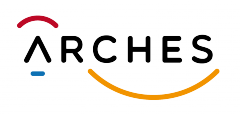ARCHES researchers publish on new ways of imagining colour and accessing museums
ARCHES has just published two important papers that show how we can better understand the needs of visitors with disabilities and include them in museums and other cultural spaces.
Published on 3rd May 2019 by in the Routledge Studies in Cultural Heritage series, two chapters in the book Cultural Heritage, Ageing, Disability and Identity develop a new way of understanding the way we feel included.
In particular, the book finds that there are five important ways to make disabled museum visitors feel more included. These are: 1) the chance to be with other people we know and feel comfortable with; 2) the chance to learn something new, and learn how to feel included; 3) the chance to find information to help us make our way to and learn something new in the museum; 4) the chance to be in all the public spaces in the museum; 5) the chance to navigate around the museum and its website.
The book finds that many museums and monuments provide some of these ways of including people with disabilities, but many miss out on providing a full sense of inclusion.
The open access draft of the chapter Inclusive Capital and Human Value, that was written through ARCHES, can be found on the following blog: https://blogs.bath.ac.uk/senseculture/2019/04/28/cultural-heritage-ageing-disability-and-identity-is-published-sample-chapters/
The second paper challenges our understanding of how we understand colour and imagination. Following an ARCHES topical review on multi-sensory understanding, which was published in the Routledge Handbook of Visual Impairment, ARCHES academics have now developed a case study of the Turkish artist Esref Armagan, who was born blind.
The case study, to be published in the National Federation of the Blind’s Journal of Blindness Innovation and Research shortly, challenges 300 years of thinking on how the brain understands colour. In particular, the article suggests that it may be possible to imagine colour through the remaining senses, language and the practice of drawing, in order to develop unique and creative images.
These findings have significant implications for those with extreme visual access needs visiting museums, who can now potentially enjoy and gain from visual art tours and lessons in museum environments.
The first draft of the paper is available through open access on the following URL: https://researchportal.bath.ac.uk/en/publications/locke-and-humes-theory-of-color-is-interrogated-through-a-case-st. The finished article will be available shortly in accessible print and e-Braille format (BRF) through the website of the Journal of Blindness Innovation and Research: https://www.nfb.org/resources/publications-and-media/journal-blindness-innovation-and-research”
Citations: Hayhoe, S. (2019). Cultural Heritage, Ageing, Disability and Identity: Practice and the development of inclusive capital. Abbingdon, UK: Routledge.
Hayhoe, S., Cohen, R., & Garcia Carrisoza, H. (Accepted/In press). Locke and Hume’s theory of color is interrogated through a case study of Esref Armagan, an artist born blind. Journal of Blindness Innovation and Research.
